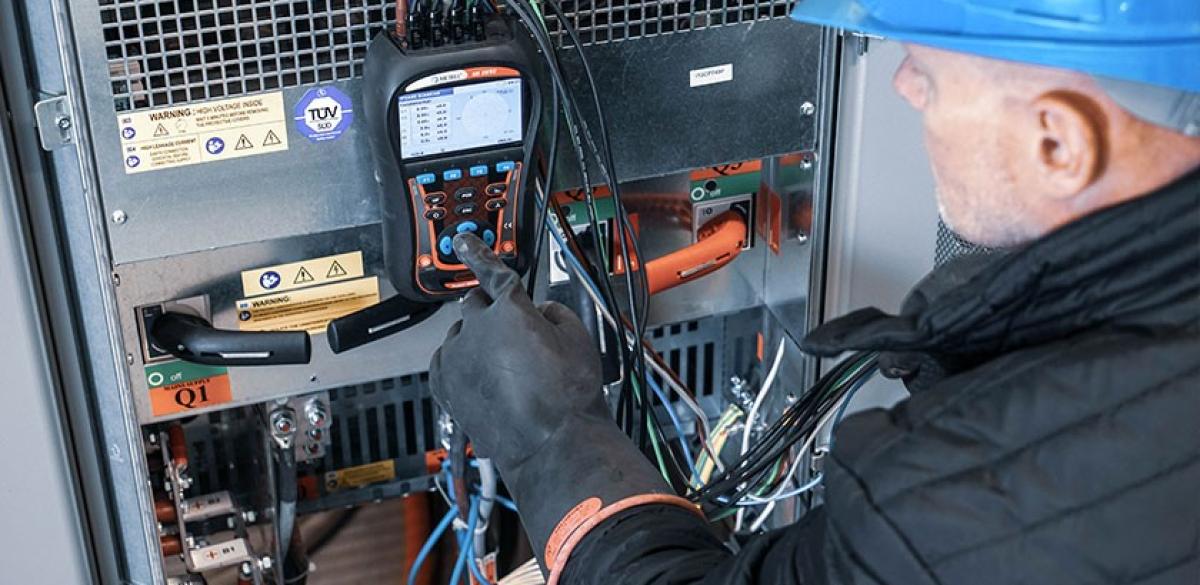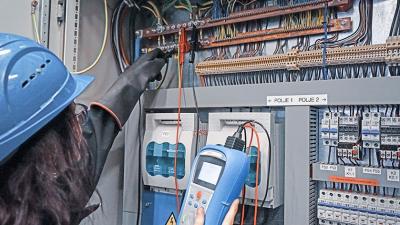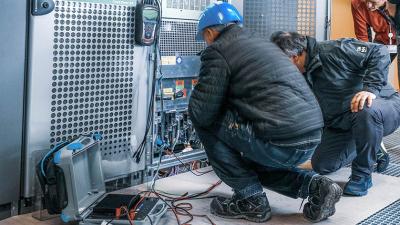Power quality
Power supply and power distribution

The power delivered from a supply is specified as pure sine at country-specific RMS voltage and frequency. It should not deviate from this ideal. But does it? There is a number of effects that can distort voltage or current shapes from the perfect sine. Some disturbances can have a source inside our system and can be fixed, while others are caused by far distant phenomena on the network or simple carelessness on supply side.
Measurement, monitoring and detection of these phenomena is covered by standards IEEE 1448, EN 50160, IEEE 1459 and IEEE 519. They cover different aspects of power quality and reporting, from voltage characteristics to energy consumption.
Variables that are considered a part of power quality are the following:
- Voltage from phase to ground. It should keep to the same RMS at all times, with no sags, swells or interruptions.
- Voltage balance. Phase difference and voltage magnitude between phases should be equal.
- Phase current, its magnitude, shape and trends.
- Frequency. Standards permit no more than 2 Hz deviation.
- Active, reactive and apparent power. They mean how much power is carried towards the energy consumer and how much away from it.
- Power factor or or cos phi is the ratio of active to apparent power. It should be as high as possible.
- Harmonic components. Harmonic distortion means change of the signal shape to less than a perfect sine. It is described in terms of frequency components in the signal.
- THD is ratio of harmonic content vs. the base component.
- Special events. They are consequences of some extreme event in the network, e.g. a lightning strike, or adding a particularly large consumer. They manifest as transients or in-rush current.
- Flicker. A flicker is a change in brightness of an ordinary lightbulb as consequence of voltage fluctuation. It is no longer as much of an issue, since control of the network has improved over the years, and there are many fewer incandescent lightbulbs in use. It is however still part of the standard.
Most of these values have to be monitored over an extended period, from a few days to a few weeks. The instrument records values at defined intervals. It will save any unusual events. Depending on the settings, it can also save the oscilloscope image.
There are two typical locations for power quality measurement. One is at the main supply connection, where every disruption from the network will be visible, but internal influences will not yet be pronounced. The other is wherever a sensitive device will be installed, and it has to be confirmed that it will be able to work with the available power. At the first location, the main issues are reactive power or power factor and events on the network. At the second location, there will be more trouble with harmonic content. A specific point for power measurement in a hospital is the UPS battery stack. The on-line system with large rectifiers that does not include extensive filtering can be a source of serious disturbances. Filtering system generally come included, but its functionality has to be periodically checked.
The measurement has to be set up with great care. Nobody will want to repeat it should an error occur. The instrument is set up with measurement of voltage and current in all the phases at the required location, then programmed for the desired functions. Monitoring can run for the whole planned period, or it can be interrupted in case of a pre-defined event.
Poor power quality can manifest in a number of ways. The most obvious are higher energy consumption and power stress on the cables. There can also be noticeable interferences between parts of the network. There are measures to prevent too high reactive power and power at higher frequencies. Main ones are notch filters that only allow desired frequency to pass, and capacitive banks to correct power factor. Isolated system or even faraday cage isolation can be necessary to keep the interferences at bay. Hospital environment is fairly vulnerable in some points: at large machinery like X-ray or MRI, and inside the isolated areas. Isolated areas are very specific in terms of power quality. They can be prone to disturbances that can’t be removed via the earth bonding, but on the other hand, they are more isolated from the interference from earth.
Measurements
Metrel offers a top quality instrument. MI 2893 conforms to Class A of the standard IEC 61000-4-30 with high accuracy, GPS time module, fast refresh rate and large comfortable colour screen. It can detect and display harmonics, phasors and waveforms anomalies in the installation simply by being connected to the grid. The measurements conform to standards EN 50160 and IEEE 519. It can simultaneously run multiple different recordings, for example transient and waveform. The user interface is simplified with the Quick-Set buttons. Data is saved to SD card for easy transfer to another device, but it is possible to connect to the instrument over Ethernet. The instrument is complemented by powerful software Power View 3 for in-depth analysis of long-term data and creation of professional reports. There is the option of a weather-resistant case for outside work.
















